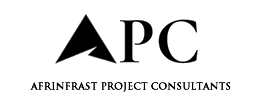
How evidence-led thinking turns uncertainty into advantage
In construction, marketing has often been seen as an expense rather than an engine for growth. It’s understandable – sales cycles stretch across months, multiple stakeholders influence every decision, and proving ROI can feel like chasing shadows.
But uncertainty doesn’t have to be part of the process. With a more evidence-led approach, construction marketers can replace instinct with intelligence, turning every campaign into a measurable investment.
A Complex Market That Demands Clarity
Few industries test marketers like construction. The buying journey is long, fragmented, and often involves architects, specifiers, contractors, and procurement teams – all with different needs.
That complexity feeds hesitation. Over half of senior B2B marketers admit they struggle to prove the value of their activity, while budgets continue to tighten. In such a climate, marketing must justify its impact with precision, not promise.
De-risking marketing is about grounding every decision in evidence so creative ideas and commercial outcomes move hand in hand.
Understanding What “Risk” Really Means
Marketing risk isn’t just wasted spend; it’s what happens when decisions are made in the dark.
It’s the campaign launched on assumption rather than insight. The creative idea chosen because it “feels right”. The results focused on clicks instead of conversions.
Each adds uncertainty and makes it harder to see what’s working or where to improve. The result is marketing that’s harder to defend, and less effective over time.
The solution isn’t less creativity, it’s smarter creativity – built on data, research, and a deeper understanding of the customer.
Four Ways to Bring Certainty Back to Marketing
1. Base Every Decision on Real Evidence
Insight should be the first step in any marketing plan. From customer interviews to data audits, knowing who you’re talking to and what motivates them reduces guesswork and strengthens performance.
2. Turn Insight into Strategy
Research shouldn’t sit in a slide deck, it should drive creative direction, channel choices, and messaging. When you build campaigns around how your audience actually thinks and buys, you cut through the noise. With average B2B conversion rates under 3%, that alignment often separates success from missed opportunity.
3. Embrace a Culture of Experimentation
Risk decreases as learning increases. Pilot activity, A/B testing, and real-time reviews allow you to optimise before investment. Marketers who continuously refine their approach see higher conversion rates because they treat marketing as an evolving process.
4. Measure What Matters Most
Volume metrics like impressions or likes tell you how busy you’ve been – not how effective you are.
Tracking commercial outcomes such as cost per lead, conversion speed and win rate, gives marketing the credibility it deserves at board level. Meaningful metrics turns marketing into a proven growth driver.
The BCM Mindset: Confidence Through Clarity
At BCM, we believe effective construction marketing combines creativity with certainty. Our work is built on research, insight, and evidence, helping clients make confident, informed decisions that drive measurable results.
We invest time in understanding the people behind every buying decision: what pressures they face, how they define value, and what influences their trust.
With a new methodology launching in 2026, we’ll give construction marketers even greater confidence, blending behavioural insight, proprietary data, and deep audience access to help brands plan and perform with precision.
Informed, Not Intuitive
De-risking marketing doesn’t mean playing it safe, it means playing it smart. It’s being bold with ideas but disciplined with evidence; creative with purpose and confident in every outcome.
For construction businesses ready to bring more clarity and control to their marketing, BCM is here to help turn calculated risk into reward.
*Please note that this is a commercial profile.
The post Removing the risk from construction marketing appeared first on Planning, Building & Construction Today.

